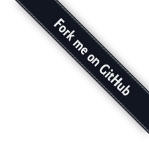
In order to build the asset you need to install yarn
If you are not familiar with yarn here are the main cmd:
yarn start => start yarn and rebuild asset after each changeyarn build:dev => build you asset in dev mode (without any compression, optimisation)yarn build:prod => build your asset in production mode (use it before deploying)As we strongly believe in OpenSource, we provide an OpenSource Template that you can use for all your new project. This template is the one used to power up the demo Shopinvader website.
In your folder of the clone repo from shopinvader-getting-started.git run the following command:
git clone https://github.com/shopinvader/shopinvader-template template
To start developping a theme for shopinvader you need to understand 2 things:
A LocomotiveCMS template is
- app
+ assets/*
+ content_types/*
+ views
+ pages/*
+ sections/*
+ snippets/*
- config
+ deploy.yml
+ site.yml
+ translation.yml
+ metafields_schema.yml
- data
+ customers.yml
+ posts_groups.yml
+ posts.yml
- public
app/assets: Your css and javascript
app/content_types: The custom model that you want for your website
app/views: pages, sections, snippets for your html
config: the configuration of your site
data: your fake demo data
Wagon is the best friend of the webdesigner !
You should see this like
docker-compose run --service-port wagon
Before playing with wagon you need to build your asset. If you forget this step the rendering will be broken.
In you terminal inside the template repository
Lauch the following command to install javascript dependency
yarn install
Then you can launch the start command to build and watch change (with auto-rebuild)
yarn start
Or you can build the dev or prod asset
yarn build:dev
yarn build:prod
Let’s try to render your website like a webdesigner !
In the docker wagon shell launch
wagon serve
Now go on http://wagon.localhost
You have a local rendering of the website.
Everything you see just come from your templating and your demo data
Try to open the file /data/posts.yml modify some text and go to the blog page to see the result
Try to open the file /app/views/pages/layouts/default.liquid
and add the following line
{% extends 'layouts/base' %}
{% block 'body' %}
<header>
{% block 'header' %}
+ <div class="alert alert-success"> you did it! </div>
{% global_section 'header', id:'page_header', placement: 'top'%}
{% endblock %}
</header>
Save it and refresh you wagon page. You should see an alter in your header
Now that you know how to customise your template, let’s deploy it !
But first take a look to the deploy.yml file in the config directory.
test:
host: http://locomotive.localhost
handle: shopinvader
email: demo@shopinvader.com
api_key: d49cd50f6f0d2b163f48fc73cb249f0244c37074
This file is for storing the API key of your different environment. You can have as many key you want (test, preprod, production…)
Let’s deploy, now run into your docker wagon (-v is for verbose mode)
wagon deploy test -v
Check the result on http://my-website-1.localhost
The alert is here but not the change you have done on the blog post.
This is normal because we only have pushed the template and not the data. In production you should not push data (because user will create the blog post,…)
But for testing it can be really usefull to push the data.
You can push all the data (even the site.yml data) by using.
wagon deploy test -v -d
Or just the content_entries data by pushing
wagon deploy test -v -d -r content_entries
Now you know the basic information of the template configuration and how to use wagon.
For more information you can